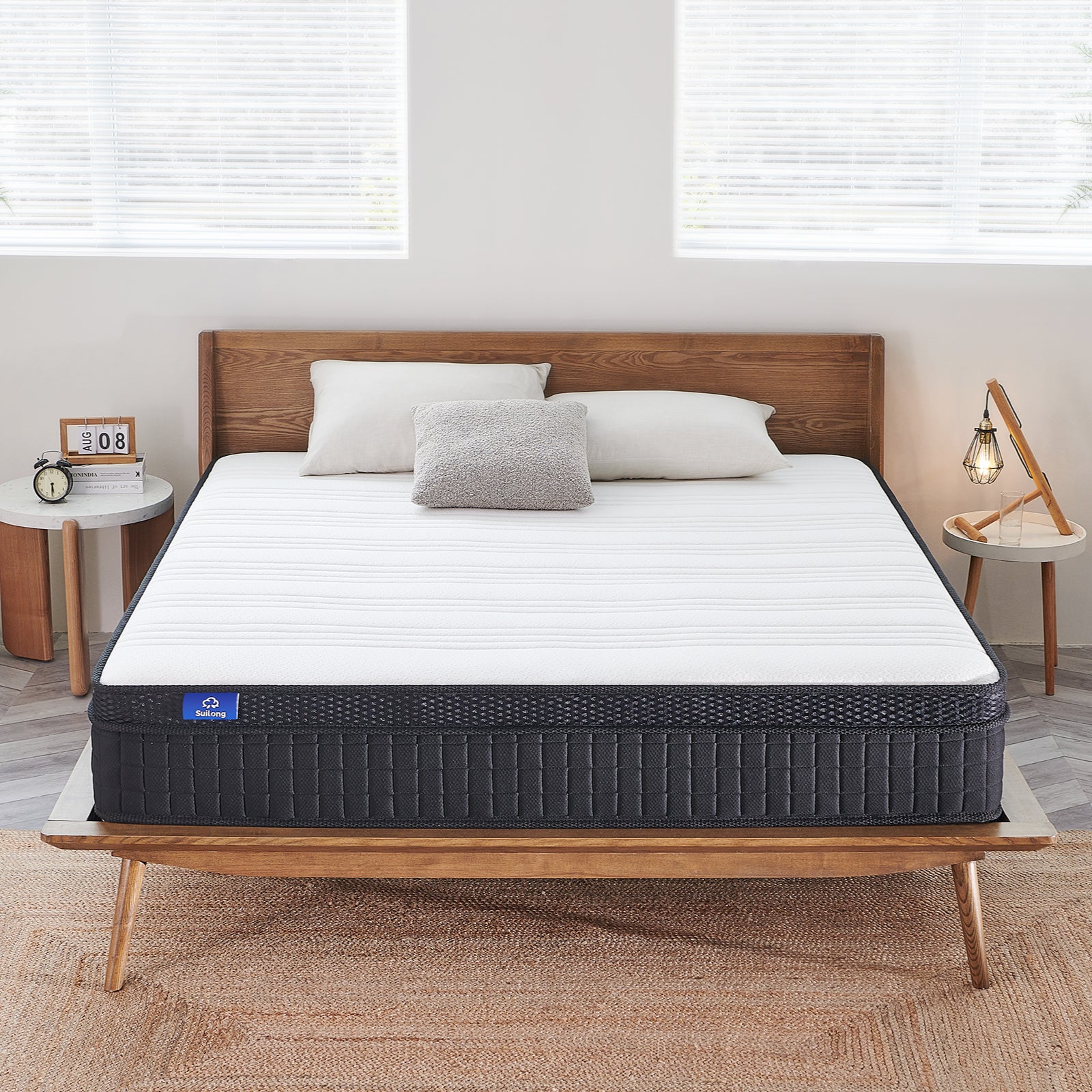Best Sleeping Position
What Are the Best Positions for Sleeping?
The importance of sleep as a basic physiological need cannot be overstated in our journey towards a healthy lifestyle. I take you on a journey to reveal how we can enhance our quality of life by adjusting our sleep position.
The Importance of Sleeping Posture

The Impact of Sleeping Posture on Health
Sleep posture is directly related to our breathing, circulation and nervous system. For example, lying on the side for a long time may lead to facial wrinkles and sagging breasts, and lying on the back may trigger mouth breathing and snoring. Wrong sleeping position can even trigger diseases such as cervical spondylosis and lumbar disc herniation.
Influence of Sleeping Posture on Sleep Quality
A good sleeping posture can help us enter deep sleep better, thus improving the quality of sleep. This way we can feel energized and refreshed in the morning.
The pros and cons of different sleep positions

Side sleeper
Side sleeping is the most common sleeping position, about 41% of people choose this position. There are left-side and right-side sleepers, and different side-sleeping directions may have different effects on our health.
Benefits: The side-lying position has a positive impact on improving the efficiency of the digestive system and reducing the risk of acid reflux. In addition, lying on your side can help improve the detoxification effect of the brain's lymphatic vascular system, which facilitates the cleansing of metabolic waste inside the brain.
Lying on your left side is especially beneficial for pregnant women, as it increases blood and nutrient flow from the uterus to the fetus, reduces uterine pressure on the inferior vena cava, and improves overall circulation.
Cons: Side lying tends to cause facial compression, which may lead to the formation of facial wrinkles in the long run. In addition, side lying may also put pressure on the breasts, especially for women, and may accelerate breast sagging.
Lying on your back

About 7% of people choose to lie on their backs as their sleeping position. This position means that your head, neck and spine are in a neutral position, which can prevent back and neck pain.
Benefit: Lying on your back can help maintain the natural curve of your spine, reducing the risk of neck and back pain. It also reduces the formation of wrinkles because there is no pressure on the face. Additionally, lying on your back is friendlier to your breasts, as they are not compressed, reducing the risk of sagging.
Cons: Lying on your back may increase the risk of snoring and sleep apnea because the tongue may fall back and obstruct the airway in this position. Additionally, lying on your back may also lead to back pain, especially if the mattress is too firm or too soft.
Prone lying

About 7% of people choose prone as their sleeping position. While this position may reduce snoring, it is not a healthy option.
Benefit: The prone position may help reduce snoring because the tongue and soft palate are less likely to fall back in this position, keeping the airway open.
Cons: However, prone lying is extremely stressful on the neck and back and can lead to pain and discomfort. This is because in prone, your head needs to rotate to the side in order to breathe, which puts a lot of pressure on the cervical spine. It is also difficult to maintain the natural curve of your spine in this position, which can easily lead to back pain. In addition, prolonged prone lying may put pressure on your face and chest, which may accelerate breast sagging for women and may also lead to the formation of facial wrinkles.
The best sleep position for special people

The best sleeping position for pregnant women
Pregnant women are advised to lie on their left side as this position helps blood circulation to the fetus, reduces leg edema and can reduce pressure on the lower back.
Best Sleeping Positions for People with Back Pain/Neck Pain Problems
For people with back or neck pain problems, choosing a mattress with the right amount of softness and firmness, and sleeping in the side or back position require particular attention to maintaining the natural curve of the spine.
Best Sleeping Positions for People with Sleep Apnea Symptoms
For people with sleep apnea symptoms, lying on the side is the best sleeping position. This position prevents the tongue from falling back and obstructing the airway.
How to find the best sleep position for you

Experiment and adjust
Try changing your position while sleeping and observe how these changes affect your sleep quality and physical comfort.
Seek professional advice
If you have a specific medical problem, such as nasal congestion, snoring or chronic pain, it is best to seek professional advice from your doctor to find the best sleep position for you.
How to change your sleeping position

Use of pillows and corrective devices
Special pillows and sleep correction devices can help you maintain a healthy sleep position.
Practice new sleep positions
Try practicing new sleep positions during the day to fall asleep more easily at night.
How to maintain a good sleep posture

Maintain Constant Sleeping Habits
Go to bed and get up regularly every day, which will help your body adapt to the new sleep position.
Regular checkups and adjustments
Every once in a while, you have to assess whether your sleep position is correct and whether you have a comfortable sleep feeling.
How to assess your sleep position
Self-perception
How your body feels when you wake up is an important indicator for assessing your sleep position. If you wake up feeling tired or having aches and pains, it may mean that your sleep position needs to be changed.
Using sleep tracking and assessment tools
There are some sleep tracking tools that can help you understand your sleep position, which can be a useful reference.
Hopefully the above in-depth breakdown will help you better understand the different sleep positions and how to find and maintain the right one for you. Your health and well-being is our greatest hope, and we hope you find the sleep position that works best for you and enjoy quality sleep that energizes you each and every day!
Read More:
FAQ
Q: What is the healthiest sleep position?
A: The healthiest sleep position can depend on your personal health status, but in general, sleeping on your back with a pillow to support the natural curvature of your spine is considered suitable for back health and to prevent wrinkles and pressure sores. However, for people who snore or have sleep apnea, side sleeping might be the healthiest option. It's always best to speak with a healthcare provider about what might work best for you personally.
Q: What are the best positions to sleep on the side?
A: The best side sleeping position involves keeping your legs and knees relatively extended (as opposed to curled up in the fetal position). You should try to maintain alignment between your ears, shoulders, and hips to minimize stress on the spine. A supportive pillow under the head that keeps your neck level with the rest of the spine is crucial. A pillow between the knees can also prevent lower back pain and increase comfort.
Q: What sleep position is best for anxiety?
A: While sleep position alone cannot solve anxiety, some studies suggest that sleeping in the fetal position (on your side with your torso hunched and your knees bent) may provide a sense of comfort and safety. However, each person is different, and the most important thing is to choose a position that helps you get a good night's sleep. Some people with anxiety also find routines and relaxation techniques helpful.
Q: What is a starfish sleeper?
A: A starfish sleeper is a person who sleeps on their back with their arms up on either side of their head, resembling the shape of a starfish. This position can be beneficial for preventing facial wrinkles and keeping the spine in alignment, but it can increase the risk of snoring and problems with acid reflux.
Q: What is a pillow hugger personality?
A: Pillow hugger personality refers to a type of personality trait often attributed to people who sleep hugging their pillow. They are believed to be more affectionate, and empathetic, and value relationships and personal bonds. It's important to note that these interpretations are not scientifically proven and might not hold true for every individual who sleeps in this way.













